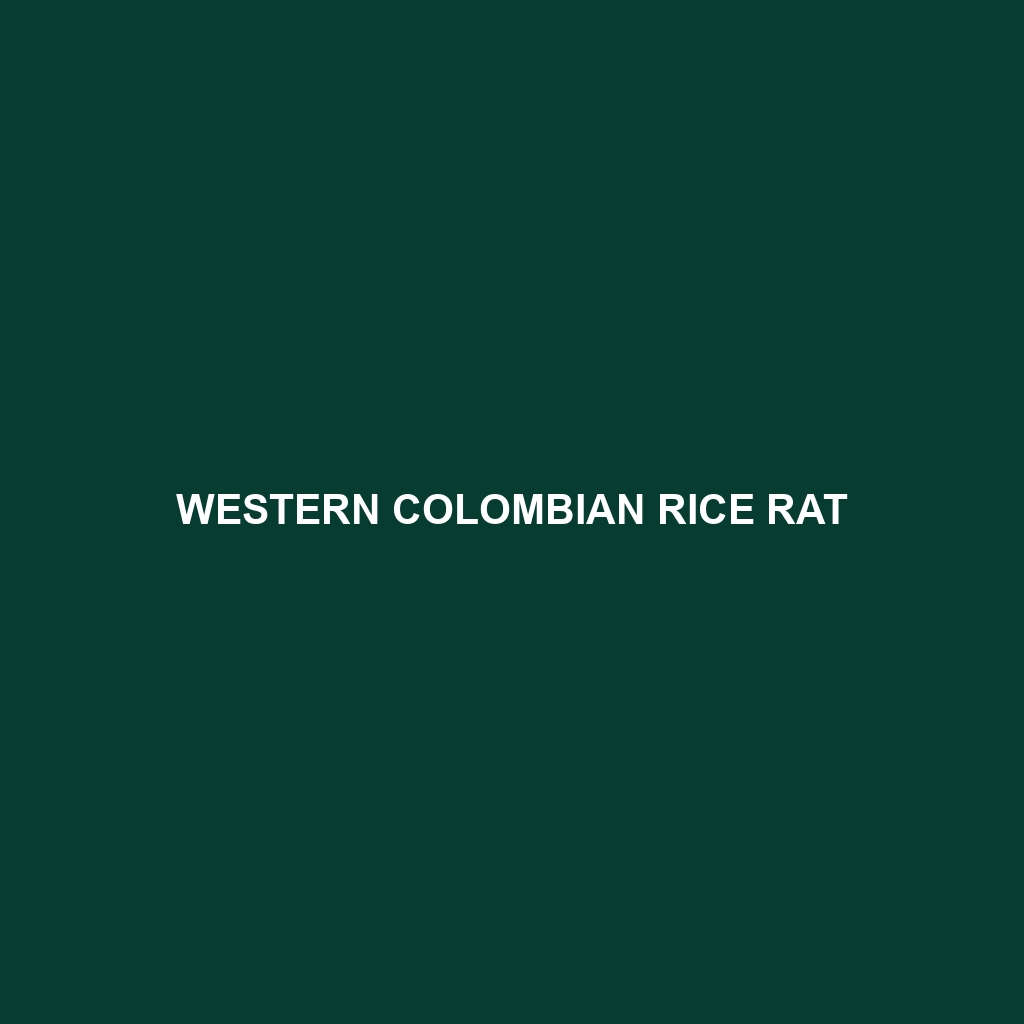Western Colombian Rice Rat
Common Name: Western Colombian Rice Rat
Scientific Name: Oryzomys cf. gorgonae
Habitat
The Western Colombian Rice Rat is primarily found in the dense, humid lowland forests and wetland areas of western Colombia. These regions include the Chocó Biogeographic Region and the Pacific coastal areas, where the rich biodiversity and ample vegetation provide a suitable environment for this species. The rice rat tends to inhabit areas near bodies of water, such as rivers, marshes, and swamps, thriving in environments that support lush flora.
Physical Characteristics
The Western Colombian Rice Rat measures approximately 25 to 30 centimeters in length, with a similarly sized tail. Its fur is predominantly brownish-gray with paler underparts, which provides effective camouflage against its surroundings. Notable features include elongated bodies, large ears, and long, scaly tails. The species exhibits a slightly tufted tail, which is an important characteristic for identification.
Behavior
Typically, the Western Colombian Rice Rat is nocturnal, displaying activities primarily during the night. It is adept at climbing and swimming, which aids in its foraging behavior. This species tends to be social, often found in small groups, creating burrows and nesting sites in dense undergrowth. Its behavioral traits, such as its agility and adaptability in aquatic environments, make it a fascinating species for researchers and wildlife enthusiasts alike.
Diet
The diet of the Western Colombian Rice Rat consists mainly of seeds, fruits, and aquatic vegetation. It forages for food in both terrestrial and semi-aquatic habitats, allowing it to exploit a wide range of food sources. This omnivorous diet plays a critical role in the plant seed dispersal within its habitat, thus contributing significantly to the ecosystem.
Reproduction
Reproductive habits for the Western Colombian Rice Rat indicate that breeding occurs year-round with peaks during the rainy season. Females typically give birth to litters of 3 to 6 offspring after a gestation period of approximately 25 to 30 days. The young are born altricial, meaning they are relatively underdeveloped at birth and rely heavily on their mother for nourishment and protection during the early stages of life.
Conservation Status
Currently, the Western Colombian Rice Rat is classified as vulnerable due to habitat loss, primarily resulting from deforestation and agricultural expansion. Its population is impacted by environmental degradation, leading to increased threats from both natural and anthropogenic activities. Conservation efforts are essential to maintaining its population and habitat viability.
Interesting Facts
The Western Colombian Rice Rat possesses remarkable swimming abilities and is often observed diving and foraging underwater. It is also known to communicate using a range of vocalizations, making it one of the more socially dynamic species within its family. Research indicates that this rice rat may have a role in controlling insect populations through its feeding habits.
Role in Ecosystem
As a key species within its ecosystem, the Western Colombian Rice Rat contributes to seed dispersal and serves as prey for various predators, including birds of prey and small mammals. Its presence helps maintain the delicate balance of the wetland and forest habitats, influencing the ecological dynamics and promoting biodiversity in western Colombia.
